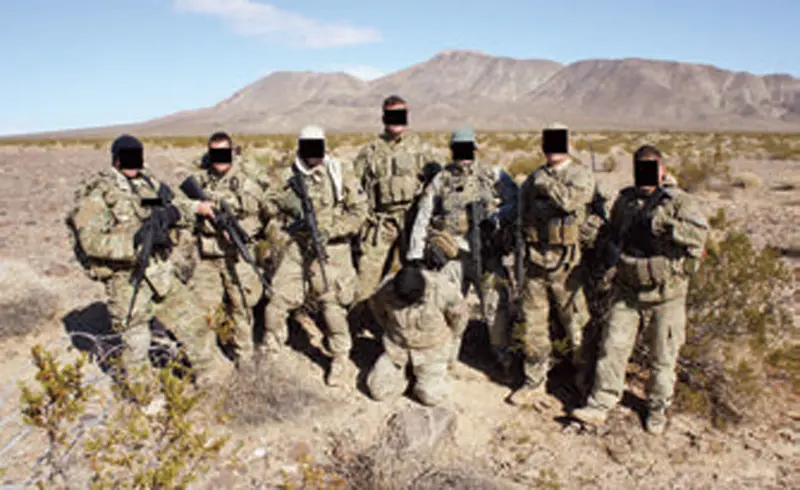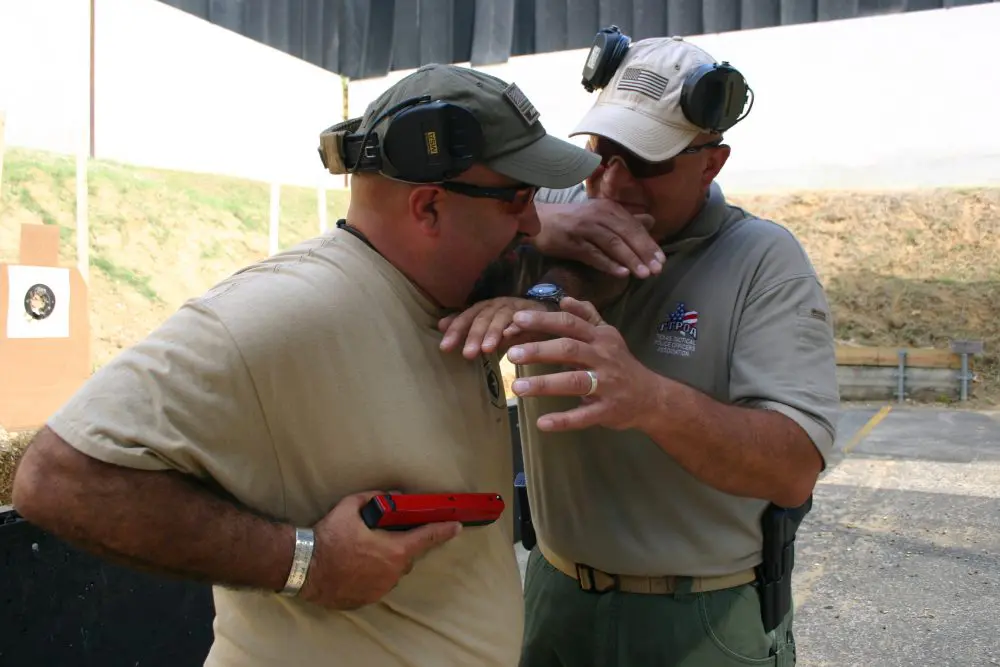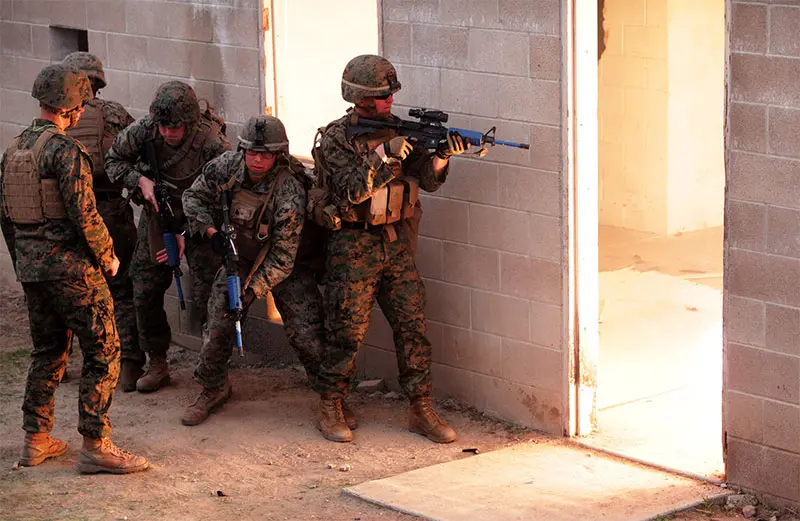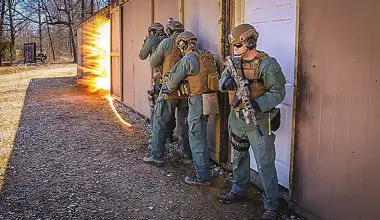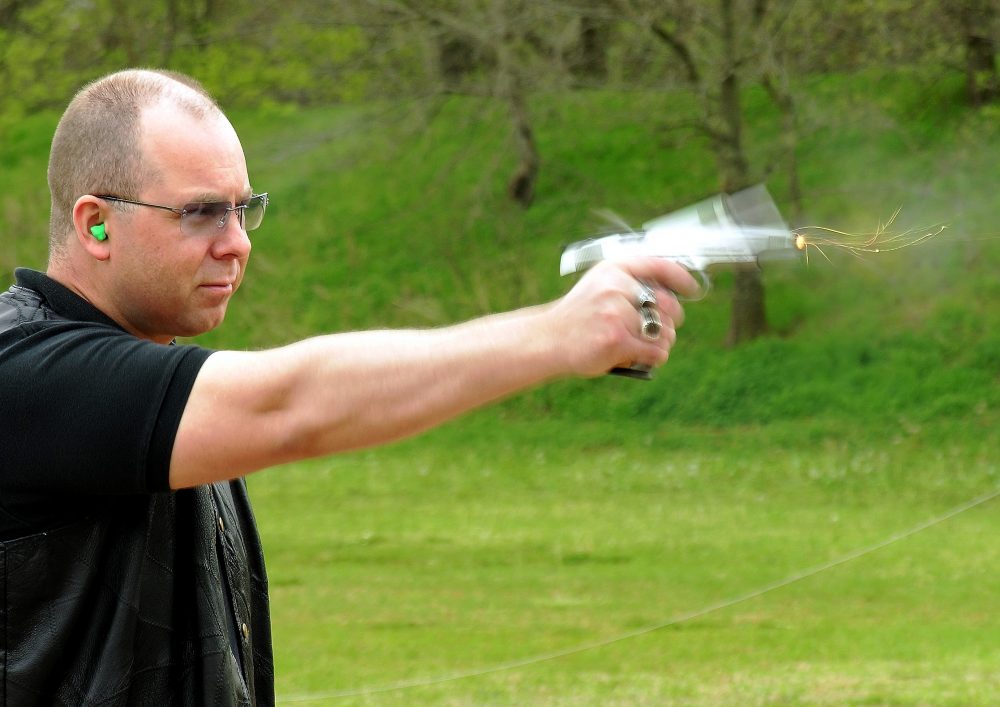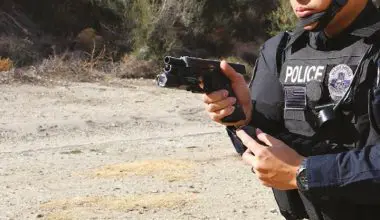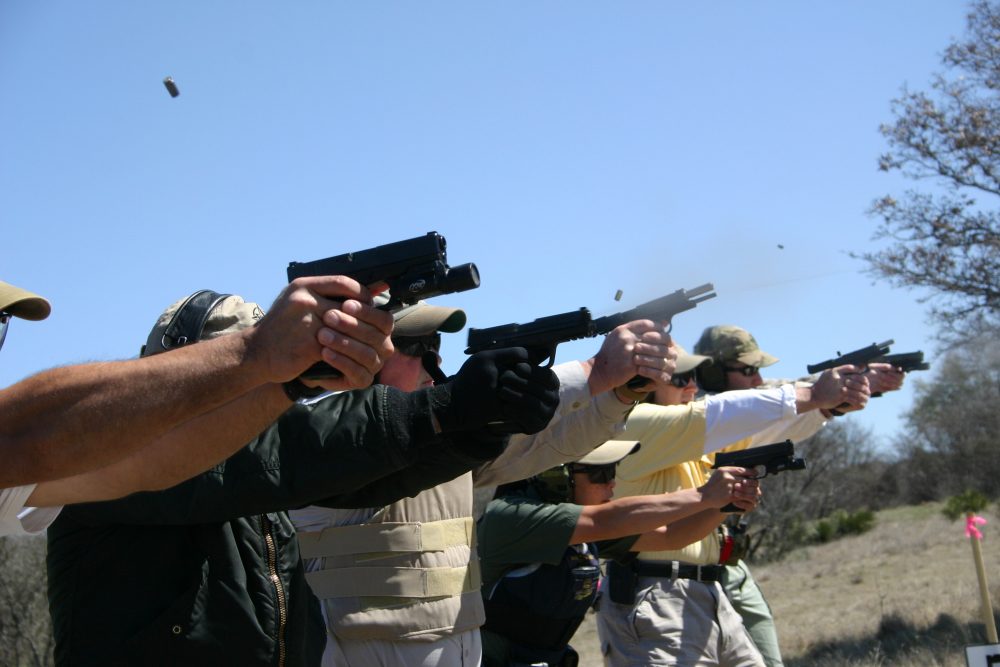During the Revolutionary War, both sides employed scout trackers. Various Native American tribes formed alliances with the French and the British and employed skills such as tracking to the advantage of those armies. Native American tribesmen like these went on to serve the United States Army in a similar capacity.
Table of Contents
GERONIMO
There is perhaps a single iconic feat that would forever ingrain “tracking” as an emotional image in the western imagination: the capture of Geronimo. The early American Army Scout Trackers are in many ways the predecessors of our modern-day Special Forces, who bear an insignia that includes the crossed arrows (or arrowhead) taken from the unit patch of the United States Army Apache Scout Trackers.
It was these same enlisted Apache Scouts who negotiated the surrender of Geronimo after tracking him over 3,000 miles of Western America. It would be unfair not to mention that these enlisted Apache Scouts met a better end at the hands of the American government than did Geronimo. However, the story became so well-known that latter-day Airborne Commandos shouted the name of Geronimo as they boldly exited their aircraft under canopy and the cover of night into occupied enemy territory.
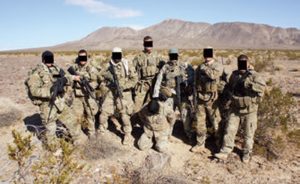
TACTICAL MAN TRACKING
To the few who remain to carry the torch of this unique trade, it is a passion turned business—and business is good. We live in an age of technological advancement and with each advancement comes a certain dependency upon it. Just as quickly as these technologies are developed and deployed, the enemy adapts to marginalize and negate the advantages of them.
For reasons such as this, tactical tracking remains very much alive. It is a skill set that has been effectively serving its purpose even in the modern theaters of war. It provides real-time intelligence on the ground, better enables tactical deployment and movement of troops, and is still utilized in the pursuit of elusive enemies.
MOBIUS TRAINING SOLUTIONS
Mobius Training Solutions (MTS) specializes in Tactical/Combat Tracking and has been quietly going about the business of doing so for a number of years. MTS is based in Artesia, New Mexico, with a satellite office tucked away in the small town of Lamesa, Texas. MTS has built a formidable reputation in small circles based upon the tactical application of man tracking.
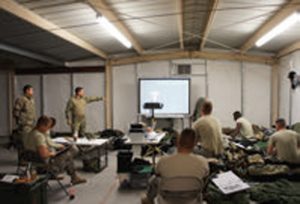
Unique to the industry, MTS offers not only a skill set based program, but builds on and enhances that skill set through incorporation of technology. MTS is able to offer both day- and nighttime tracking operations utilizing stateof- the-art night-vision optics, even in its Level One course curriculum.
Clent Schoonover is the Director of Operations and Head Instructor of Mobius Training Solutions. He has served in the United States Army, was a deputy sheriff, is a former agent of the Central Intelligence Agency and a Department of Homeland Security Federal Law Enforcement Training Center instructor. Clent oversees five company divisions covering Legal, Criminal Investigation, Advanced Tactics, Firearms, and Search and Rescue.
MTS offers search and rescue (SAR) based tracking courses to civilian teams. Tactical/Combat Tracking Levels 1 and 2 courses are tactical-based programs limited to military and law enforcement only.
I learned of MTS a year after I returned home from overseas. When I called, to my surprise, I was not greeted by a high-speed sales pitch, nor was I given the soft sell and shooed off the phone. Instead I was speaking to Clent himself, and he took the time to tell me about the program in depth, when and how the courses ran, and what I would actually be capable of after taking a course.
TACTICAL/COMBAT TRACKING, LEVEL 1
In the pristine little classroom of the satellite office in Lamesa, we sat sipping hot coffee and talking about the unseasonable cold while waiting on the arrival of members of our group who were driving in that morning from Lubbock.
When the class began, after a bit of illustration via PowerPoint and note taking, we were ready for our first field exercise—the first of many. After all we had learned that morning, each participant was excited to nail the exercise regardless of what little we actually knew at the time. With Clent as a voice of reason floating over our shoulders, we soon came to realize what it means to get caught in the tracker’s trap of trying too hard.
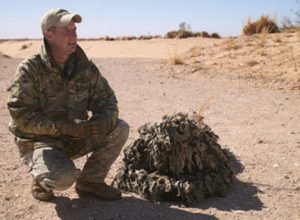
This was an obstacle that took days to overcome, as each new exercise presented a challenge that set off an “I want to be able to do this” buzz in the course participants. Upon entering the field, we couldn’t help but want the training wheels to come off. But the weather, sun, terrain, and eyestrain fast humbled these ambitions.
Kept in check from self-defeat under the watchful eye of Clent, I began to get in the zone. Once I learned to calm my mind, relax my eyes and allow the instructor to show me how he is able to see what he sees, I found I’d taken a big step in the right direction.
Our team consistently rotated positions. This was not the demonstration of “follow the leader” that I was accustomed to. The team operates with a tracker, controller, forward right and left flank and rear defensive positions. Each individual in the tracking team must be capable of fulfilling each of these roles. Communication is executed between the tracker and controller working in tandem, with the controller communicating among the team’s various positions via hand signals.
As the five days of the course went by, we could feel the training wheels coming off, ever so slowly. This coincided with our introduction to night tracking.
Night tracking at first made me feel as if I were going back to square one. Fortunately, this was not actually the case. Utilizing various technologies and techniques, we were quickly back on our feet. Night tracking was incredible. It was a concept that I was not fully able to accept as possible in theory, but there we were, doing it in practice.
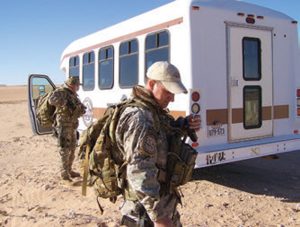
GOING BEYOND
I eventually came to a point where the capability I’d gained was a surprise even to myself. With only one day left in the course, the overanticipation was nearly gone and I’d begun to feel confident. Although I didn’t know quite what to expect next, I began to feel I was ready for any challenge.
When the fifth and last day came, it was warm. This was the change in the weather we had all been hoping for. As the sun rose in the cool morning sky, it quickly became hot. Soon we were stripping off layers and putting them in our backpacks.
The training is executed in full load out: chest rig (full of mags), ruck, “rubber duck” AR-15 and side arm. Under the sun we began to realize what true desert tracking is all about. But tracking is all about one more thing: closing time and distance with the adversary. It was on this day that we discovered if we really were capable of putting the skill set into action.
We set out on our track until the adversary had reached a road and crossed it. We picked up the sign on the other side and were then informed by Clent that we had “picked up outside intelligence” that the adversary had crossed this road approximately ten minutes ago.
This was our opportunity and we needed to move, fast. We brought up our rear guard to work in tandem as a tracker. We then began the technique of “leap frog” in order to maximize speed. One tracker would find sign and the other bounded forward and began to cut for sign. When the forward tracker found sign, he would signal back to the controller. The rear tracker would then bound forward and confirm that the forward tracker was on sign. He would then bound forward again, begin to cut for sign, and the process would repeat.
This time the game had changed. Clent was no longer the voice of reason and calm. Instead he was now applying pressure: “Come on,” “Move,” “Pick it up,” and “Go!” This was the real test. Could we function under pressure, when the heat was on? The heat was definitely on!
We moved at an unprecedented pace, staying on sign, bounding, cutting and picking up sign, moving fast and moving faster. It was phenomenal. Not once did I stop to wonder if we might break down. Although we were moving at speeds I had never imagined, it somehow seemed very natural. Only at the end of our track did it truly dawn on me just how far we had come and what we had accomplished.
In a moment of reflection, I realized that we had been led to this outcome one step at a time, each step calculated by a man who knew better than we did how we would react every step of the way and where we would end up at the end of the five days.
If you have the need or just the desire to learn the skill set of tactical man tracking, I unreservedly recommend Mobius Training Solutions.
